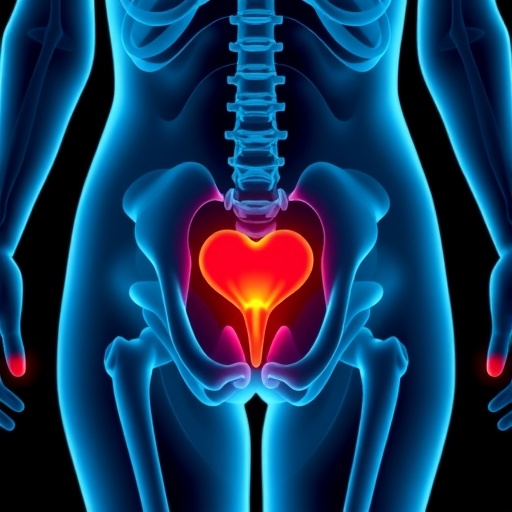How do cells and protein molecules respond to stress as they travel through blood vessels? Could resulting changes to these biological components impact how diseases are spread?
Researchers at Rochester Institute of Technology are answering those questions using fluid dynamics and mechano-biology strategies to better understand blood flow and how cells moving through blood vessels are affected by shear stress–pressure and friction on objects. Understanding the biomechanics of blood flow and the role shear stress plays on cell and protein behavior could help lessen the incidence of cancer metastasis and heart failure, or improve the process of engineering replacement tissues and organs, said Jiandi Wan, an assistant professor of microsystems engineering in RIT's Kate Gleason College of Engineering, who recently received a $476,505 award from the Gordon and Betty Moore Foundation for this work.
"This helps us understand how cells and protein respond to shear stress exerted by blood flow. That is the fundamental question because then you can regulate the blood flow to control cellular and molecular behaviors and by understanding the mechanism of what controls that flow," said Wan. "We can use this information to determine how the blood can bring diseases to other parts of the body, and can we control it? This could have a huge clinical impact–once you have this fundamental understanding."
Wan's research focuses on how biological cells "know" and respond to externally-applied mechanical forces. It is part of a growing field of research, and his research team has developed state-of-art experimental models and devices to explore the mechano-sensing dynamics of red blood cells, circulating cancer cells and primary erythroid cells–red blood cells or their developmental precursors. The work could advance the understanding of biological mechanics and enhance the ability to treat diseases with effective therapeutic strategies.
There is friction, or shear stress, on large serum proteins as they move through blood vessels resulting, in some instances, in the protein being stretched and changed, Wan explained. Using nanophotonics–the study of the interaction of nano-scale objects using light technologies–Wan has been able to determine some distinct changes to cell proteins and structures.
"The broad application for this is, we are able to detect how mechanical force changes proteins structures without any additional labeling of the protein," he explained. "This conformational change plays a role in blood clotting and other important biological processes, too. But, we are trying to directly observe this phenomenon using opto-fluidics, where the refractive index change of protein due to flow-induced conformational change can be recorded."
Mechano-biology is an emerging area of science and engineering that focuses on mechanical processes and their effect on cells and protein molecules, on the influence of mechanical process on biological functions and the study of these functions at cellular and molecular levels.
This research builds on previous studies by Wan on the in vitro microfluidic circulatory system for circulating cancer cells. He and his research team developed protocols and a microfluidic device and system to mimic the transportation of circulating tumor cells to explore shear stress effects, particularly interested in how tumor cells move from primary to secondary locations in the body. Wan is also an adjunct, assistant professor in the Center for Translational Neuromedicine at the University of Rochester, involved in similar studies determining how the blood circulation system in the brain "knows" it must strategically increase or decrease flow to deliver oxygen for nerve cells and structures of the brain. Research in these areas could be used in the development of novel materials and strategies for brain and cancer research.
"This fundamental understanding applies to a wide range of applications, that's why I am so excited about this work, and how it can impact diseases," Wan said. "Think about our body, your blood vessels are like a supplying pipe, and blood flow delivers nutrients and oxygen, it carries out waste. If you do not have the proper blood flow or distribution in place, your organs die; you cannot live. It is that simple."
###
Media Contact
Michelle Cometa
[email protected]
585-475-4954
@ritnews
http://www.rit.edu
############
Story Source: Materials provided by Scienmag




